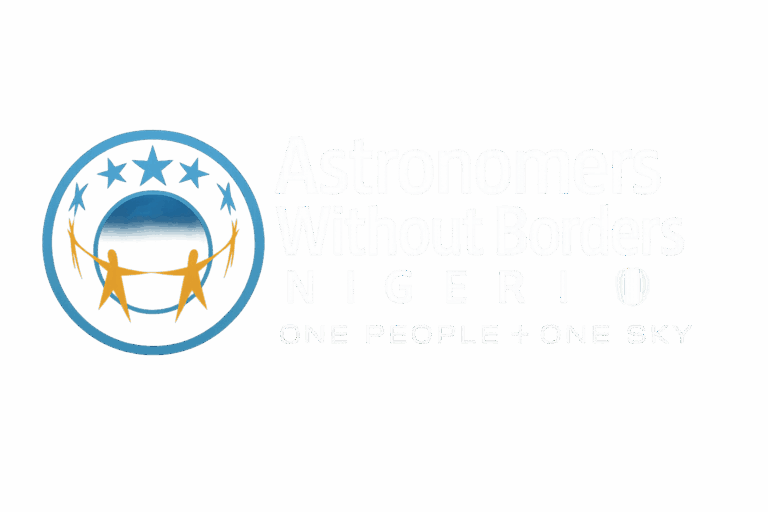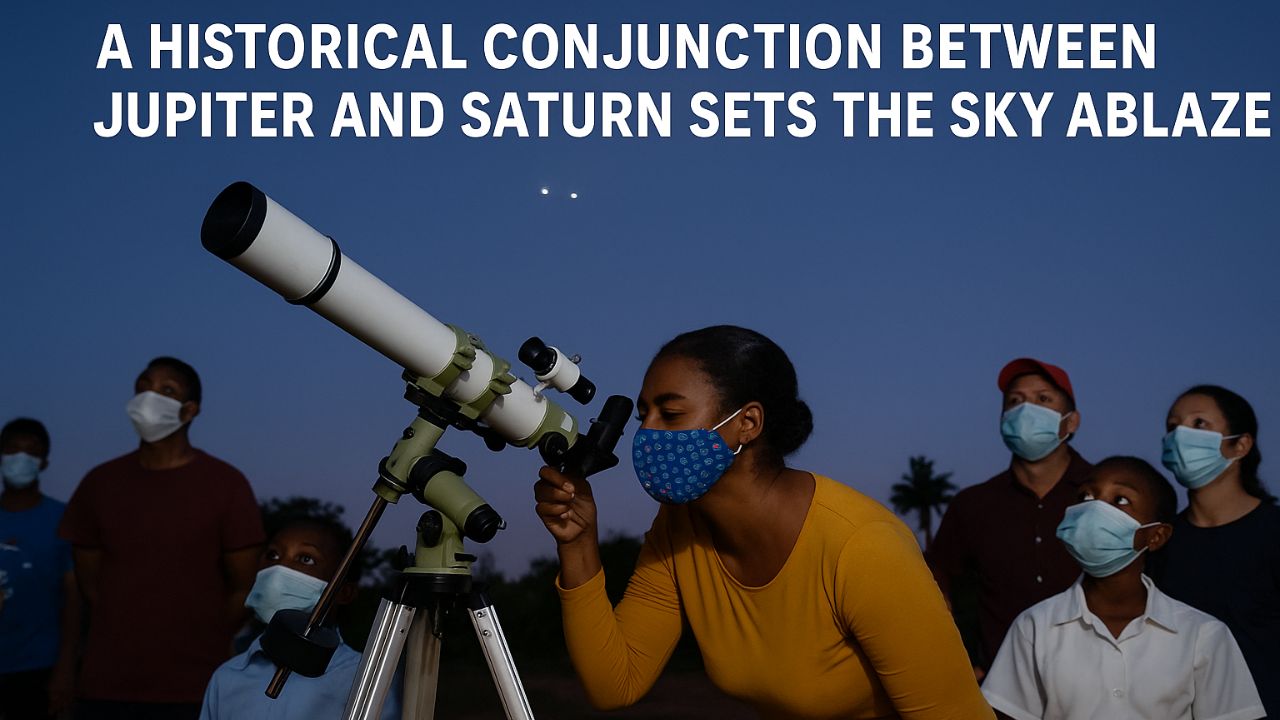On December 21, 2020, just after sunset, the skies above Nigeria—and across the world—lit up with a rare celestial event not seen for nearly 800 years: the Great Conjunction of Jupiter and Saturn. Often called the “Christmas Star,” this once-in-a-lifetime planetary alignment captured the imagination of astronomers, educators, and skywatchers across generations.
Astronomers Without Borders Nigeria (AWB Nigeria) led coordinated outreach events across Abuja, Jos, and Enugu, enabling students and families to witness the spectacle through telescopes, binoculars, and unaided eyes. More than just a sky event, this conjunction became a unifying moment of wonder and reflection in a year of global uncertainty.
What is a Great Conjunction?
A “conjunction” in astronomy occurs when two celestial objects appear very close to each other in the sky from Earth’s perspective. A Great Conjunction refers specifically to the meeting of the two largest planets in our solar system: Jupiter and Saturn.
 South Africa Weekend Weather September 2025 – Provinces Alerted of Dangerous Rain Conditions
South Africa Weekend Weather September 2025 – Provinces Alerted of Dangerous Rain Conditions
While these gas giants align roughly every 20 years, the 2020 event was exceptionally close, with the planets separated by only 0.1°—that’s less than the width of a fingernail held at arm’s length. The last time Jupiter and Saturn appeared this close was in 1226 A.D., making it a truly historic moment.
The View from Nigeria
Despite occasional cloud cover in parts of the country, much of Nigeria had clear skies on the evening of December 21. From rooftops to school fields, people gathered in safe, socially-distanced groups to catch a glimpse of this stunning alignment.
AWB Nigeria set up telescopes at multiple viewing sites in collaboration with local schools and science clubs. In Abuja, more than 150 attendees at Millennium Park viewed the planets through an 8-inch Dobsonian telescope, clearly seeing Jupiter’s four Galilean moons and Saturn’s rings in the same field of view—a breathtaking sight.
Educational Outreach & Engagement
To make the most of the event’s educational value, AWB Nigeria conducted:
- Pre-event webinars on planetary motion and orbital dynamics.
- Printable sky maps to help families locate the conjunction.
- Live social media coverage to guide viewers in real time.
- Cultural storytelling sessions linking the conjunction to ancient African sky beliefs.
A student from Enugu Science College exclaimed:
“I felt like I was in a space movie. Seeing Saturn and Jupiter together made me feel like the universe is real and reachable.”
Teachers used the event to explain:
- Angular separation and conjunction types.
- Why planetary orbits lead to such rare alignments.
- How early astronomers predicted such events using only math and observation.
The Global Significance
The timing of the conjunction—coinciding with the winter solstice—added to its symbolic weight. While many associated it with the “Star of Bethlehem,” others viewed it as a moment of cosmic hope after a difficult year marked by the COVID-19 pandemic.
International astronomers called it “the closest visible conjunction of Jupiter and Saturn since the Middle Ages.” The next such event this close won’t occur until 2080.
 September 2025 R12,500 Youth Grant – Application Window Open With Step-by-Step Instructions
September 2025 R12,500 Youth Grant – Application Window Open With Step-by-Step Instructions
AWB Nigeria’s Impact
The event reaffirmed AWB Nigeria’s commitment to public astronomy and science engagement. Their efforts ensured that thousands of Nigerians—many of them first-time skywatchers—were able to understand and appreciate the significance of the moment.
“You don’t need a spaceship to explore space. Sometimes, all it takes is knowing where to look,”
– AWB Nigeria National Coordinator
Partnerships with schools, the Nigerian Space Research and Development Agency (NASRDA), and community groups helped expand the reach of the event to underserved areas, where smartphones and local volunteers became tools for sky navigation.
Looking to the Future
Inspired by the event, AWB Nigeria announced several follow-up initiatives:
- Conjunction Watch Clubs to observe other planetary alignments and eclipses.
- “Sky Literacy” Modules added to science curricula in partner schools.
- Mobile Observatory Vans planned for future rural outreach.
The Great Conjunction of 2020 reminded Nigerians—and the world—that even in the darkest times, the universe offers us light, wonder, and perspective. As Jupiter and Saturn came together in the heavens, people across borders came together in curiosity and awe.
In that shared moment under the same sky, we were not divided by nations or beliefs—we were united by the cosmos.
One People. One Sky. One Celestial Dance.




